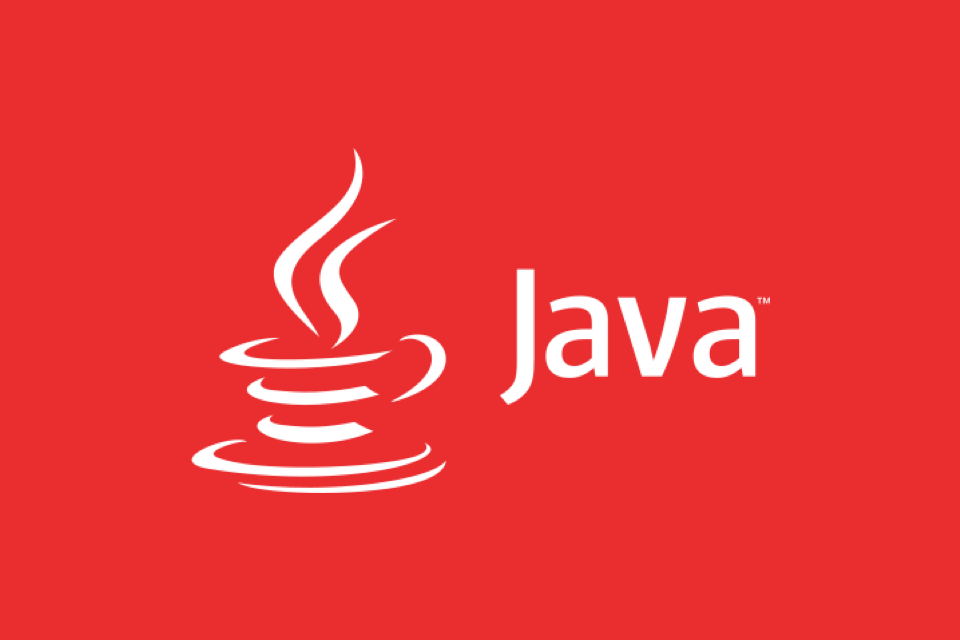How Java ClassLoaders Work Internally
Java's class loading mechanism is implemented through ClassLoader, and its core workflow is divided into three stages: loading, linking and initialization. During the loading phase, ClassLoader dynamically reads the bytecode of the class and creates Class objects; links include verifying the correctness of the class, allocating memory to static variables, and parsing symbol references; initialization performs static code blocks and static variable assignments. Class loading adopts the parent delegation model, and prioritizes the parent class loader to find classes, and try Bootstrap, Extension, and Application ClassLoader in turn to ensure that the core class library is safe and avoids duplicate loading. Developers can customize ClassLoader, such as URLClassLoader for remote loading, WebApp ClassLoader implements application isolation, and OSGi supports modular dynamic loading. In addition, class unloading depends on the recycling of ClassLoader. If ClassLoader is referenced, it cannot release memory, which can easily lead to leakage. The life cycle needs to be managed reasonably to optimize resources. Mastering the ClassLoader principle helps troubleshoot problems, optimize structure and design plug-in systems.

Java's class loading mechanism is an important part of the JVM runtime, and ClassLoader is the core of this mechanism. Understanding how ClassLoaders works will help troubleshoot class loading problems, optimize program structure, and even help you better design a modular system.

Basic process of class loading
When a Java program runs, not all classes are loaded from the beginning. Instead, when the class is used for the first time, it is loaded into memory by the ClassLoader. This process is roughly divided into three stages:

- Loading : Find the binary bytecode file of the class (usually a .class file), read and create a Class object.
- Linking : includes three steps: verification, preparation and parsing. Verify to ensure the correctness of the class; prepare to allocate memory for static variables and set default values; parsing is to replace symbolic references with direct references.
- Initialization : Execute the class constructor
<clinit></clinit>method, which is the static code block and static variable assignment operations we write.
Among these three steps, loading is done by ClassLoader, and the remaining two stages are controlled by the JVM.
Parent Delegation Model
ClassLoaders in Java adopts a mechanism called "parent delegation" to avoid duplicate loading of classes. Each ClassLoader has a parent class loader. When loading the class, it will first delegate to the parent class to load. Only when the parent class cannot be loaded will it try to load it by itself.

The standard ClassLoader hierarchy is as follows:
- Bootstrap ClassLoader : is responsible for loading the core classes (such as
java.lang.Object) that come with the JVM, usually located in rt.jar. - Extension ClassLoader : Loads Java extension library, generally located in
jre/lib/extdirectory. - Application ClassLoader (also called System ClassLoader): Loading the class under the application classpath, is the ClassLoader we deal with most often.
For example, when you call Class.forName("com.example.MyClass") , the default is that the Application ClassLoader initiates the loading request. It will first ask Extension, then ask Bootstrap. If none of them are found, then go to classpath to find it yourself.
The advantage of this mechanism is that it ensures the consistency and security of the class and prevents user-defined classes from overwriting the core class library.
Common ClassLoader implementation and usage
In addition to the standard ClassLoader mentioned above, Java also allows developers to customize ClassLoader to meet specific needs, such as loading classes from the network, hot deployment, plug-in systems, etc.
Several common ClassLoaders:
- URLClassLoader : It can load classes based on URLs (such as local files or remote HTTP addresses), suitable for dynamic loading of external JAR packages.
- Custom ClassLoader : Inheriting
ClassLoaderand rewritingfindClass()orloadClass()methods can implement your own class loading logic. - WebApp ClassLoader (commonly in Tomcat): Each web application has its own independent ClassLoader, which is used to isolate the class versions of different applications.
- OSGi ClassLoader : used in modular systems, supporting dynamic loading and unloading of classes.
If you are developing a plug-in system, you may need to customize a ClassLoader to load the plug-in's JAR file from the specified directory. For example:
public class PluginClassLoader extends ClassLoader {
private final File jarFile;
public PluginClassLoader(File jarFile, ClassLoader parent) {
super(parent);
this.jarFile = jarFile;
}
@Override
protected Class<?> findClass(String name) throws ClassNotFoundException {
try {
byte[] classBytes = readClassFromFile(name);
return defineClass(name, classBytes, 0, classBytes.length);
} catch (IOException e) {
throw new ClassNotFoundException("Class " name " not found", e);
}
}
private byte[] readClassFromFile(String name) throws IOException {
// Actually read the bytecode of the class from the JAR...
}
}This way you can load the classes in the plug-in through this class loader.
Class Uninstallation and Memory Management
What many people don't know is that classes can be uninstalled, but this only happens when the corresponding ClassLoader is garbage collected. In other words, as long as your ClassLoader is still referenced, all classes it loads will not be recycled, which can easily cause memory leakage.
Therefore, when using a custom ClassLoader, you should pay attention to timely release resources, especially in frequent loading/unloading scenarios, such as hot updates or dynamic module loading.
A common practice is to place the ClassLoader in a weak reference container, or manually set it to null when it is no longer needed to allow GC to be recycled smoothly.
Basically that's it. ClassLoader is a relatively low-level but very practical part of Java. Mastering its principles and usage can help you write more flexible and robust applications.
The above is the detailed content of How Java ClassLoaders Work Internally. For more information, please follow other related articles on the PHP Chinese website!

Hot AI Tools

Undress AI Tool
Undress images for free

Undresser.AI Undress
AI-powered app for creating realistic nude photos

AI Clothes Remover
Online AI tool for removing clothes from photos.

Clothoff.io
AI clothes remover

Video Face Swap
Swap faces in any video effortlessly with our completely free AI face swap tool!

Hot Article

Hot Tools

Notepad++7.3.1
Easy-to-use and free code editor

SublimeText3 Chinese version
Chinese version, very easy to use

Zend Studio 13.0.1
Powerful PHP integrated development environment

Dreamweaver CS6
Visual web development tools

SublimeText3 Mac version
God-level code editing software (SublimeText3)

Hot Topics
 Laravel lazy loading vs eager loading
Jul 28, 2025 am 04:23 AM
Laravel lazy loading vs eager loading
Jul 28, 2025 am 04:23 AM
Lazy loading only queries when accessing associations can easily lead to N 1 problems, which is suitable for scenarios where the associated data is not determined whether it is needed; 2. Emergency loading uses with() to load associated data in advance to avoid N 1 queries, which is suitable for batch processing scenarios; 3. Emergency loading should be used to optimize performance, and N 1 problems can be detected through tools such as LaravelDebugbar, and the $with attribute of the model is carefully used to avoid unnecessary performance overhead.
 python memory management example
Jul 28, 2025 am 01:10 AM
python memory management example
Jul 28, 2025 am 01:10 AM
Python's memory management is based on reference counting and garbage collection mechanisms. 1. The reference counting mechanism ensures that objects are released immediately when the reference number is 0. The return value of sys.getrefcount() is 1 more than the actual reference because it increases its reference itself; 2. Circular references cannot be cleaned through reference counting, and it depends on the generational recycling of the gc module. Calling gc.collect() can recycle unreachable objects; 3. In actual development, long-term holding of large object references should be avoided. We can use weakref weak references, timely place None to release memory, and use tracemalloc to monitor memory allocation; 4. Summary: Python combines reference counting and garbage collection to manage memory, developers can use tools and optimize reference pipes.
 Integrating PHP with Machine Learning Models
Jul 28, 2025 am 04:37 AM
Integrating PHP with Machine Learning Models
Jul 28, 2025 am 04:37 AM
UseaRESTAPItobridgePHPandMLmodelsbyrunningthemodelinPythonviaFlaskorFastAPIandcallingitfromPHPusingcURLorGuzzle.2.RunPythonscriptsdirectlyfromPHPusingexec()orshell_exec()forsimple,low-trafficusecases,thoughthisapproachhassecurityandperformancelimitat
 Laravel raw SQL query example
Jul 29, 2025 am 02:59 AM
Laravel raw SQL query example
Jul 29, 2025 am 02:59 AM
Laravel supports the use of native SQL queries, but parameter binding should be preferred to ensure safety; 1. Use DB::select() to execute SELECT queries with parameter binding to prevent SQL injection; 2. Use DB::update() to perform UPDATE operations and return the number of rows affected; 3. Use DB::insert() to insert data; 4. Use DB::delete() to delete data; 5. Use DB::statement() to execute SQL statements without result sets such as CREATE, ALTER, etc.; 6. It is recommended to use whereRaw, selectRaw and other methods in QueryBuilder to combine native expressions to improve security
 Using MapStruct for Painless Bean Mapping in Java
Jul 28, 2025 am 03:20 AM
Using MapStruct for Painless Bean Mapping in Java
Jul 28, 2025 am 03:20 AM
MapStruct is a compile-time code generator used to simplify mapping between JavaBeans. 1. It automatically generates implementation classes by defining interfaces to avoid manually writing lengthy set/get mapping code; 2. It has type-safe, no runtime overhead, supports automatic mapping of the same name fields, custom expressions, nested objects and collection mapping; 3. It can be integrated with Spring and uses @Mapper(componentModel="spring") to inject mapper into Springbean; 4. Simple configuration, just introduce mapstruct dependencies and annotationProcessorPaths inserts
 Reactive Programming in Java with Project Reactor and Spring WebFlux
Jul 29, 2025 am 12:04 AM
Reactive Programming in Java with Project Reactor and Spring WebFlux
Jul 29, 2025 am 12:04 AM
Responsive programming implements high concurrency, low latency non-blocking services in Java through ProjectReactor and SpringWebFlux. 1. ProjectReactor provides two core types: Mono and Flux, supports declarative processing of asynchronous data flows, and converts, filters and other operations through operator chains; 2. SpringWebFlux is built on Reactor, supports two programming models: annotation and functional. It runs on non-blocking servers such as Netty, and can efficiently handle a large number of concurrent connections; 3. Using WebFlux Reactor can improve the concurrency capability and resource utilization in I/O-intensive scenarios, and naturally supports SSE and WebSo.
 python ternary operator example
Jul 28, 2025 am 02:57 AM
python ternary operator example
Jul 28, 2025 am 02:57 AM
Python's ternary operator is used to concisely implement if-else judgment, and its syntax is "value_if_trueif conditionelsevalue_if_false"; 1. It can be used for simple assignment, such as returning the corresponding string based on positive and negative values; 2. It can avoid division errors, such as determining that the denominator is non-zero and then division; 3. It can select content according to conditions in string format; 4. It can assign labels to different elements in list derivation formula; it should be noted that this operator is only suitable for binary branches and should not be nested multiple layers. Complex logic should use the traditional if-elif-else structure to ensure readability.
 Unit Testing and Mocking in Java with JUnit 5 and Mockito
Jul 29, 2025 am 01:20 AM
Unit Testing and Mocking in Java with JUnit 5 and Mockito
Jul 29, 2025 am 01:20 AM
Use JUnit5 and Mockito to effectively isolate dependencies for unit testing. 1. Create a mock object through @Mock, @InjectMocks inject the tested instance, @ExtendWith enables Mockito extension; 2. Use when().thenReturn() to define the simulation behavior, verify() to verify the number of method calls and parameters; 3. Can simulate exception scenarios and verify error handling; 4. Recommend constructor injection, avoid over-simulation, and maintain test atomicity; 5. Use assertAll() to merge assertions, and @Nested organizes the test scenarios to improve test maintainability and reliability.







